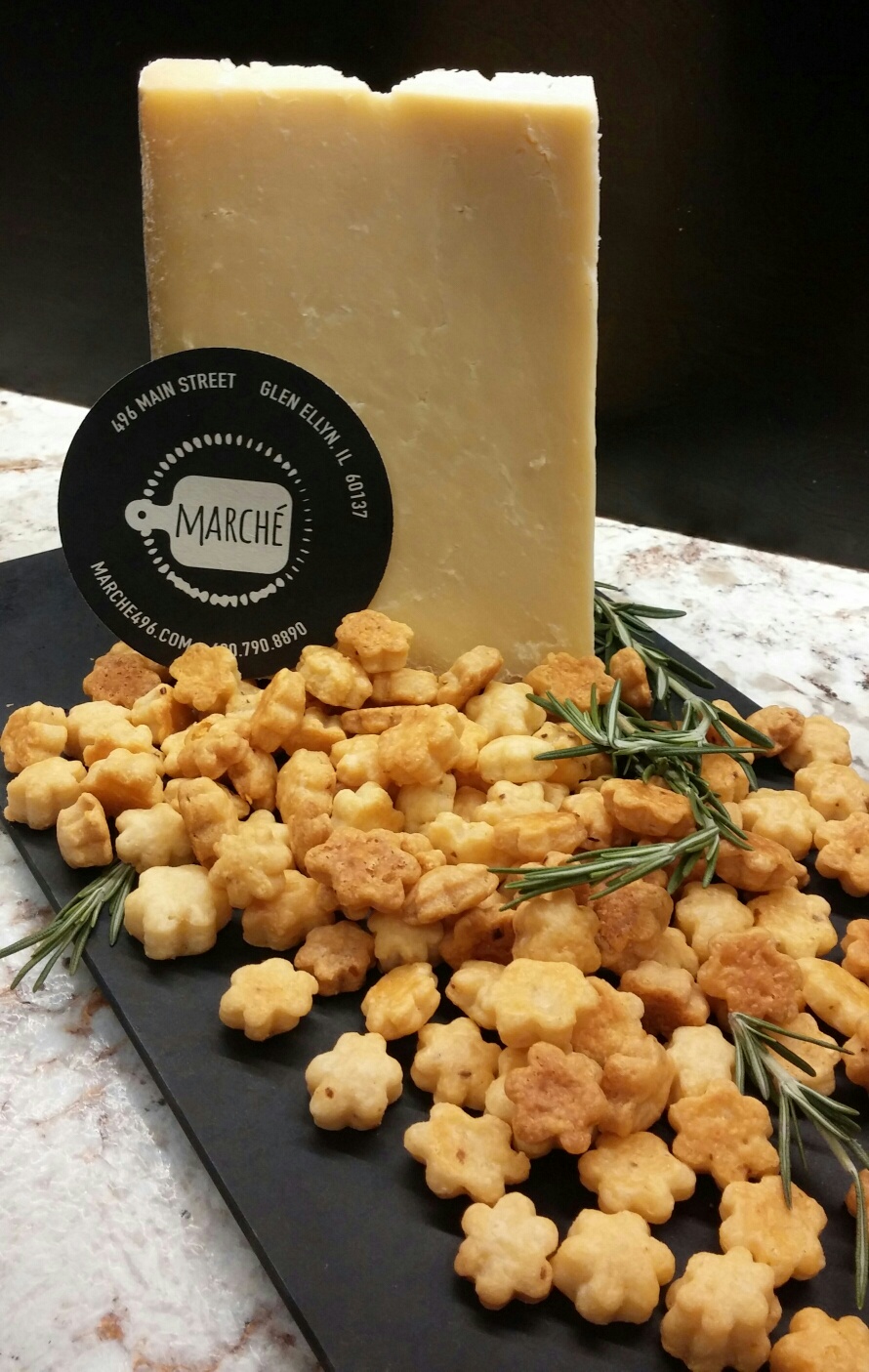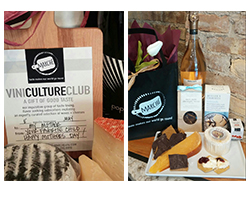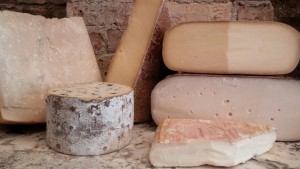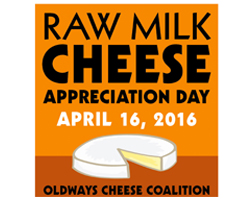
What We’re Cookin’: Rosemary Chili Cheddar Bites by Susan Argiris
April 6, 2016
MARCHÉ’S BEST GIFT IDEAS for THE BEST MOM in the world!
April 29, 2016It seems there’s a day/week/month for nearly every cause/fad/group these days but the one we really take to heart is fast approaching. On April 16th, Marché is participating in the international “Raw Milk Cheese Appreciation Day” organized by the Oldways Cheese Coalition. Their mission is to bring a research-based approach to promote and protect traditional cheeses and artisan cheesemakers. They are instrumental in working with government regulatory agencies and in providing the public with the knowledge to make their own informed cheese choices.
 So what’s all the fuss about raw milk cheese? It has been a hot button topic since the 1940s when the FDA issued its current regulations prohibiting the sale of cheeses, both imported and domestic, made from raw (non-pasteurized) milk unless it has been aged 60 days or more under the premise that potential pathogens will be destroyed in that time. Through the decades there have even been attempts by the FDA to prohibit raw milk cheeses altogether. That would ban cheeses like Gruyère, Roquefort and Parmigiano-Reggiano – centuries-old classics that by local regulation must be made with raw milk – as well as so many of our younger American favorites.
So what’s all the fuss about raw milk cheese? It has been a hot button topic since the 1940s when the FDA issued its current regulations prohibiting the sale of cheeses, both imported and domestic, made from raw (non-pasteurized) milk unless it has been aged 60 days or more under the premise that potential pathogens will be destroyed in that time. Through the decades there have even been attempts by the FDA to prohibit raw milk cheeses altogether. That would ban cheeses like Gruyère, Roquefort and Parmigiano-Reggiano – centuries-old classics that by local regulation must be made with raw milk – as well as so many of our younger American favorites.
RAW V. PASTEURIZED
The most commonly employed pasteurization process heats milk to 161 degrees F for 15 seconds, enough to destroy virtually all bacteria, both beneficial and potentially harmful. (Pasteurized milk is generally homogenized as well, another process that alters its molecular structure.) This is where the debate comes in: does the risk of maintaining the natural and beneficial state of raw milk cheese outweigh the safety of altering its through modern processing techniques?
One can’t deny the benefits of pasteurization 150 years ago as we transformed from an agricultural to industrial society, moving off the farm to cities with limited access to clean, fresh food sources. With dismal sanitary conditions, food-borne illness and disease were common. In 1864, French scientist Louis Pasteur discovered that heat-treating beer and wine prevented spoilage and became safer for consumption. The same principle was soon applied to milk, which quickly became a large scale commodity, allowing for safer distribution to urban populations and has become a panacea for large-scale, cost-efficient farming and industrial cheese production.
Much of our fear comes from the once-prevalent dangers of raw milk but it is a mistake to categorize raw milk and raw milk cheese together. Through the cheesemaking process, salt and beneficial cultures are added, and lactose (milk sugar) is turned to lactic acid, all which fight to destroy harmful bacteria that may be present. The biggest risk factor lies in the quality of the raw milk. Eliminating potential hazards starts with healthy animals, preferably on a varied, natural diet free of growth hormones and routine antibiotics. Further risk reduction involves conscientious production practices and ensuring hygienic processing, facilities, aging environments and distribution. This European risk-evaluation approach, realized through centuries of practice, seems to make more sense than our current “shoot now, ask questions later” approach.
CHEESE QUALITY
 The more obvious benefit of cheese made from raw milk is the taste. You don’t have to be an expert to appreciate the variance and depth of flavors and extended finish from the microflora which express the “terroir” – that sense of place. Raw milk from animals grazed on diverse, fresh pastures will taste very different from those fed on dry or formula feed. Their intake, both food and water, contains those beneficial bacteria and microflora that contribute unique flavors to their milk. During the cheesemaking process, these bacteria release enzymes which break down fats and proteins and release flavorful esters that contribute to the unique character of every batch of raw milk cheese.
The more obvious benefit of cheese made from raw milk is the taste. You don’t have to be an expert to appreciate the variance and depth of flavors and extended finish from the microflora which express the “terroir” – that sense of place. Raw milk from animals grazed on diverse, fresh pastures will taste very different from those fed on dry or formula feed. Their intake, both food and water, contains those beneficial bacteria and microflora that contribute unique flavors to their milk. During the cheesemaking process, these bacteria release enzymes which break down fats and proteins and release flavorful esters that contribute to the unique character of every batch of raw milk cheese.
Less apparent is the texture and shelf life of raw milk cheese. Working with both raw and pasteurized cheeses every day at Marché I notice that the raw milk versions tend to have greater suppleness or a cleaner break when cutting. Similar pasteurized cheeses tend to stick to the knife with a rubbery feel. As we care for our inventory over time, wheels of raw milk cheese also seem to have a greater staying power, maintaining their quality longer.
HEALTH BENEFITS
Raw milk, our first and most basic source of sustenance, contains many beneficial components. Cheese has been produced for thousands of years as a means of preserving that nutrition. Beyond the primordial comfort we derive from raw milk cheese, it contains all eight essential amino acids, proteins, healthy fats, minerals, omega 3 fatty acids and probiotics. As part of a healthy, well-balanced diet, raw milk cheese, especially made from grass fed animals, can contribute to a stronger immune system, improve allergies, may help maintain lean body mass and may help protect against certain heart disease and type 2 diabetes. It’s what Mother Nature intended. And while not a scientist, I think the continued research and understanding of raw milk cheese will recognize it as part of the healthy Mediterranean diet along with olive oil and red wine.
CHEESE OF CHOICE
Very recently, the Oldways Cheese Coalition, together with the American Cheese Society and Raw Milk Cheesemakers’ Association, have been consulting with the FDA which has agreed, at least for now, not to impose any blanket bans on raw milk cheese and are working on a uniform set of regulations regarding their production. By keeping the dialogue open with the FDA and cheesemakers and by keeping consumers informed about traditional raw milk cheese these organizations are fighting for the livelihood of so many artisan producers and for us to have the right to choose for ourselves.
The second annual “Raw Milk Appreciation Day” sponsored by the Oldways Cheese Coalition is taking place April 16 at retailers, restaurants and cheese producers around the globe from Paris and London to Glen Ellyn, IL . Marché is joining the celebration by highlighting our raw milk cheeses and donating ten percent of those sales to the Oldways Cheese Coalition to help further their work. We encourage you to stop by, have a taste, enjoy a raw milk cheese plate and to take some home. We think you’ll agree it’s a taste and tradition worth supporting.

